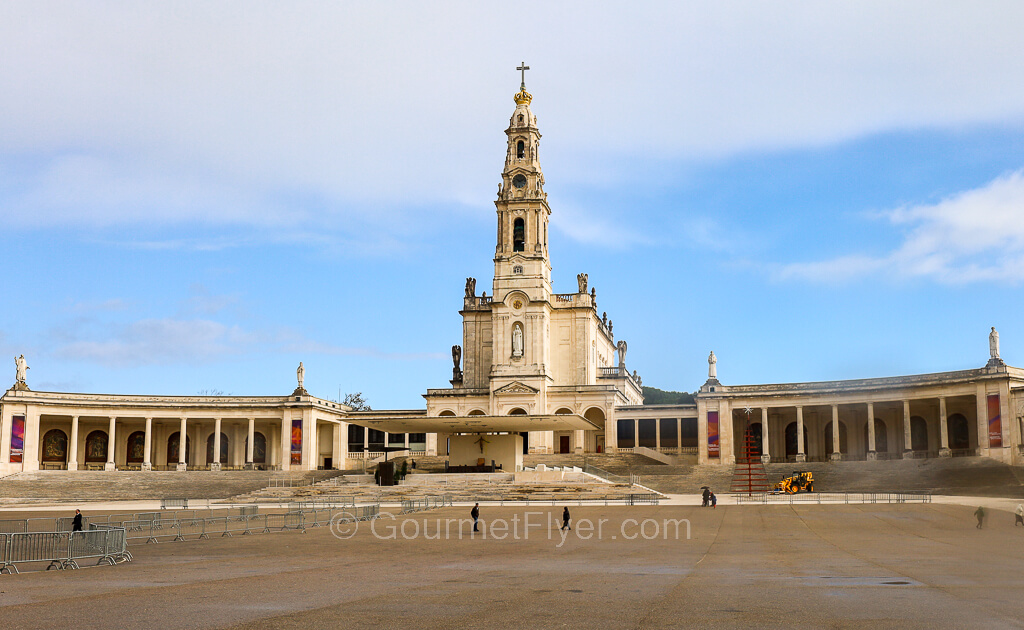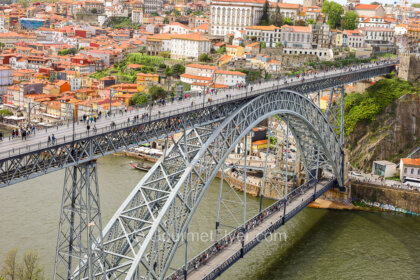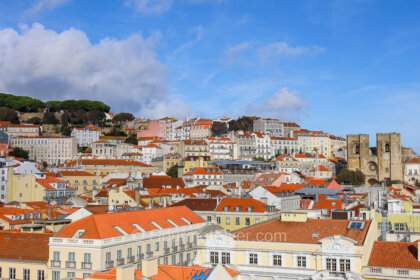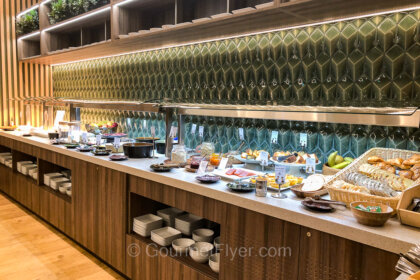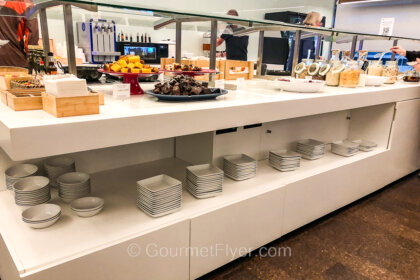While Lisbon is an amazing city to visit by itself with almost numerous attractions to keep you busy, you should not overlook the many day trips that also takes you to iconic landmarks, breathtaking sceneries, as well as richly immersive historical and cultural experiences. The day trip from Lisbon to Fátima, Nazaré and Óbidos is certainly one of those tours that will make your journey to Portugal’s capital more enjoyable, enriching, and memorable. I am happy to share my insights and experience with you in this review, along with plenty of highlights and pictures.
Table of Contents
Meeting Point
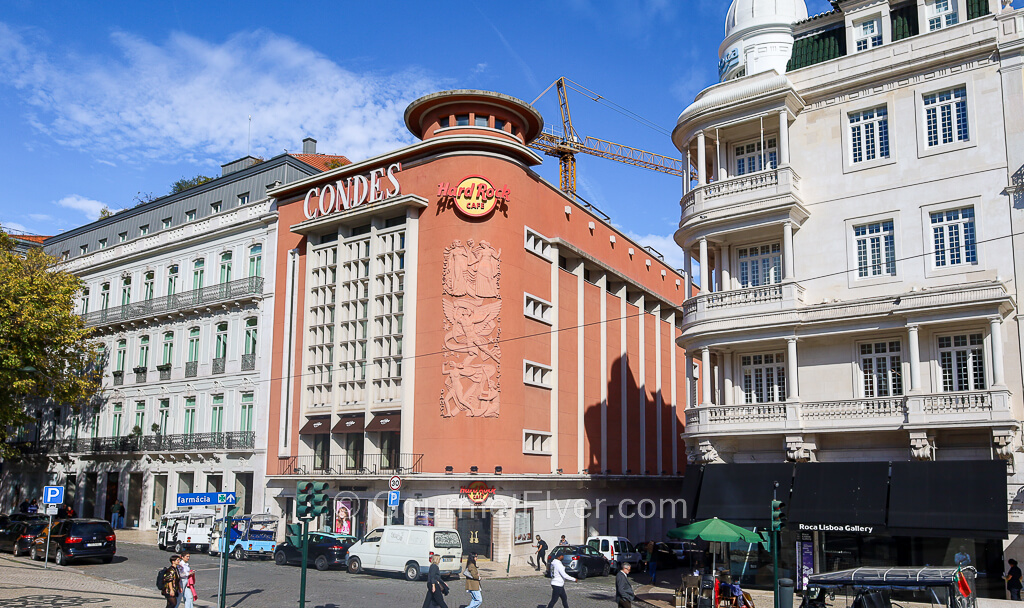
We met at 8:30am in front of the Hard Rock Café (map) located in Av. da Liberdade 2, right across from the Praça dos Restauradores. It is within a short walking distance from many hotels and apartments in the area. It is just steps away from the Restauradores station of the Metro’s Blue Line. You can also get there from the Rossio stop of the Green Line which is a 10-minute walk away.
Our guide met us sharply on time and gave us a brief overview of the day’s itinerary. We then walked to his air-conditioned van which was parked only a short distance away. This was a small group tour limited to only eight people and my wife and I shared the minivan with three other couples. We got along very well with the other couples and the entire journey was very pleasant from start to finish.
The Sanctuary of Fátima
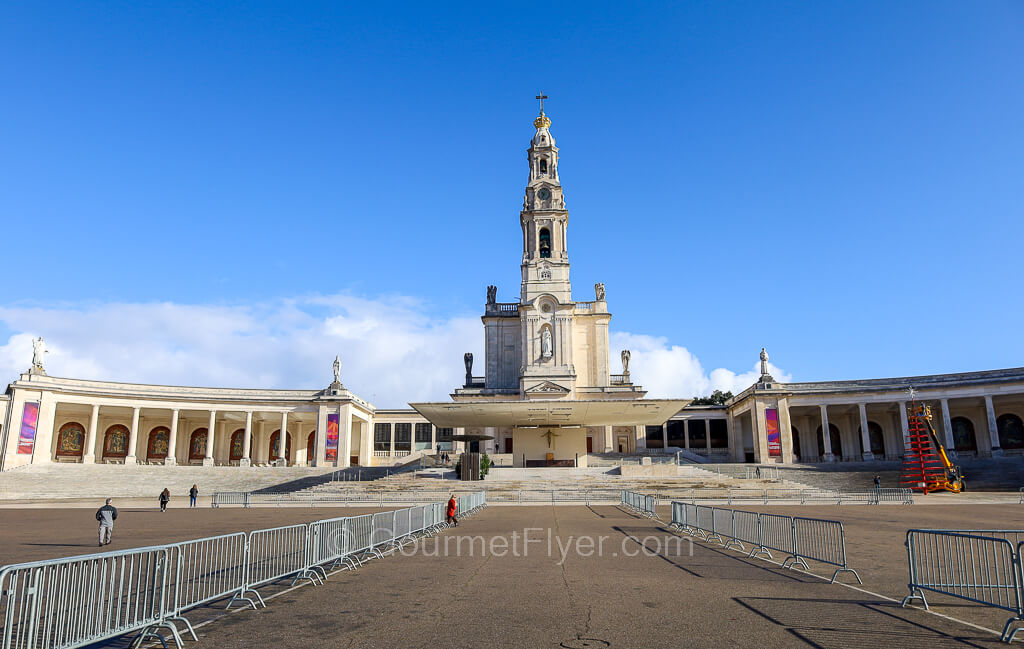
The drive to the quaint village of Fátima was about an hour and a half but we were entertained with the history of Portugal and the background of the destinations we would be visiting that day. Our guide was knowledgeable and informative. On our way to Fátima, he told us the entire history of the apparition of the Virgin Mary to three shepherd children – Lúcia, Francisco, and Jacinta – a total of six times between May and October in 1917.
We arrived at the Marian Shrine a little after 10am. After a brief introduction, we were given about 90 minutes of free time to explore the place on our own.
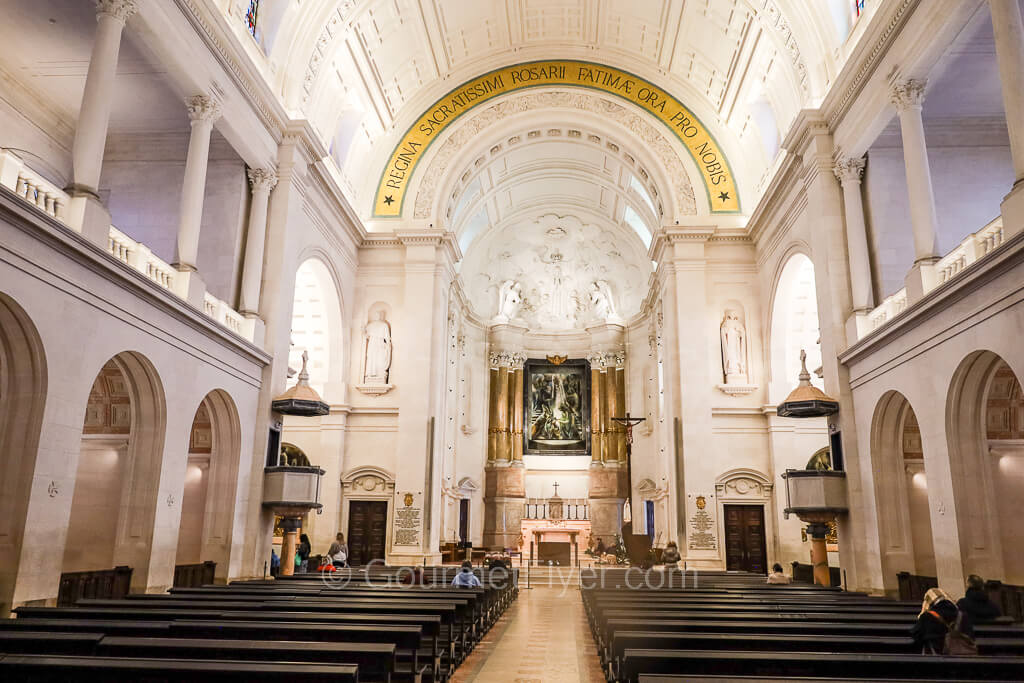
The Basilica of Our Lady of the Rosary of Fatima was built in 1928 and dedicated to the mysteries of the Rosary and in honor of Her apparition. The design of the interior of the church was meticulously done and many features, though subtle, were religiously significant – for example, some of the events of the apparition were illustrated in some of the stained-glass windows. The tombs of two of the three children who witnessed the apparition – Francisco and Jacinta – were inside the basilica. If you walk toward the altar, you will see them to your right.
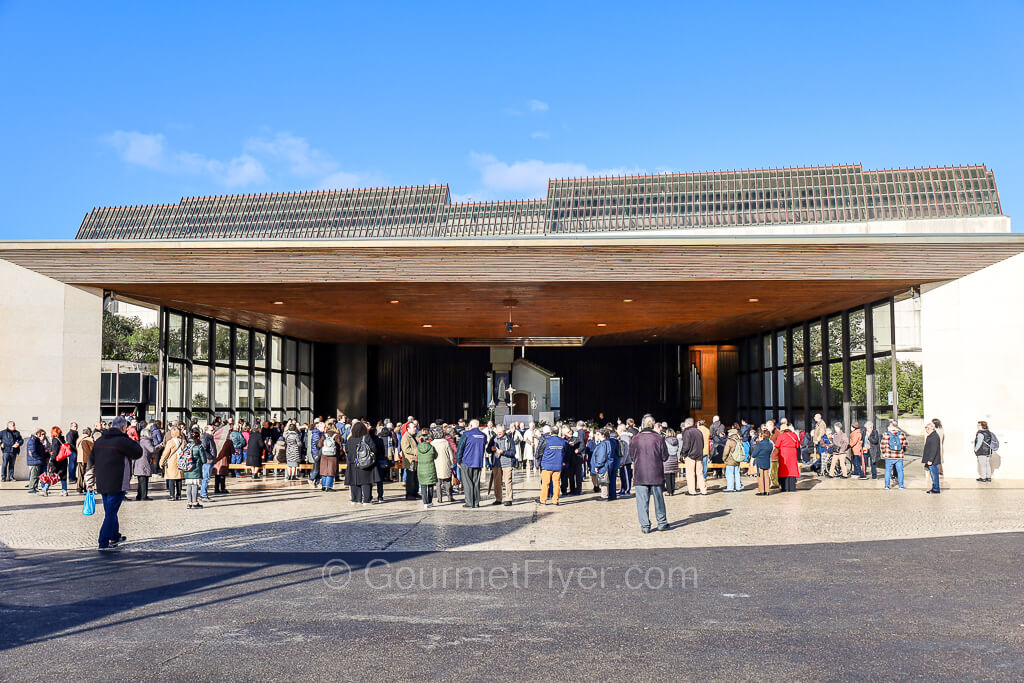
While the Basilica is the main building of the campus, many Catholics might view the Chapel of Apparitions as the centerpiece of the shrine. This is the site of the apparitions, and the exact spot is marked by a statue of the Blessed Virgin Mary placed on a white marble platform. My wife and I arrived there in the middle of a rosary liturgy, and we were very grateful that we had the opportunity to attend at least part of this sacred service.
Batalha Monastery

Another Marian connection was about a 20-minute drive away, at the Batalha Monastery, officially known as the Monastery of Saint Mary of the Victory. King John I believed that Portugal’s victory over the Castilians in 1385 was a divine intervention by the Mother of God. To fulfill his promise and to commemorate what was believed to be a miraculous victory, King John I built the monastery as a dedication to the Blessed Virgin Mary. The lateral view of the monastery shown about features a statue of Nuno Álvares Pereira, the Portuguese general who played a crucial role in winning the battle and was also instrumental in ultimately securing the country’s independence.

The structure is a stunning masterpiece in Manueline Gothic architecture. The style of the design and the complexity of every element in its construction was very similar to that of the Jerónimos Monastery in Belém. Every detail was meticulously crafted, and the entire construction took over a hundred years to complete. Shown above are sculptures of the twelve apostles on both sides of the portal of the main entrance.
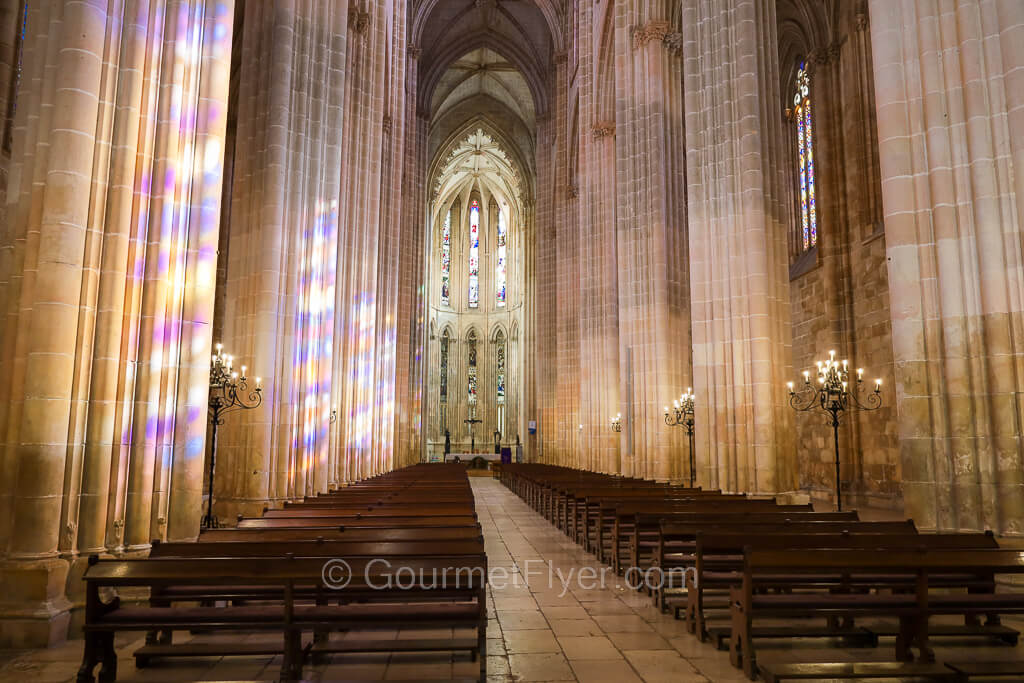
The gothic interior is just as majestic and breathtaking as the building’s façade. The church is long and narrow and has a high and imposing ceiling. Light enters into the church through stained glass windows from the side walls. Depending on the time of the day, if the sunlight shines through at a particularly good angle, you can snap a perfect picture of the colorful reflections on the pillars.
Nazaré
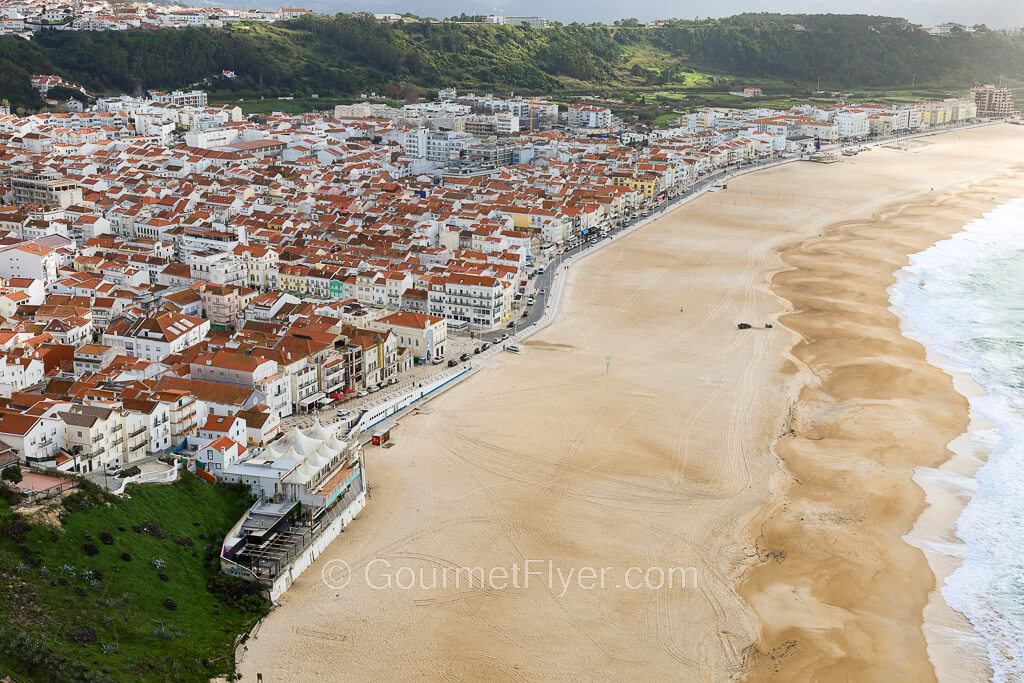
The next stop on our itinerary for the day was Nazaré, a usually quiet fishing town known for its long sandy beaches along the Atlantic coast. It is a popular beach resort and a cozy vacation town. However, Nazaré is also best known for its giant 100-foot waves – the biggest in the World – which occur about half a dozen times a year between the months of October and March. When the giant waves hit, this supposedly peaceful town is turned into chaos by the World’s best big-wave professional surfers and the thousands of fans who flock there to witness the actions.
But you have to be very lucky to catch those big waves on a tour. My wife and I were not that lucky, but our time spent there was rather calm and relaxing.
Our driver first took us to the top of a cliff with breathtaking views and we were given about 30 minutes of free time to roam around and to take pictures. There are many great photo spots so be sure to snap that Instagram-worthy shot while you are there.
On a side note, on the cliff you will see a few old ladies dressed in traditional seven-skirts selling pistachios. I highly recommend that you try them. My wife and I bought some and we liked them very much. They were locally grown and roasted, and we were unable to find pistachios as flavorful and aromatic elsewhere in Portugal.
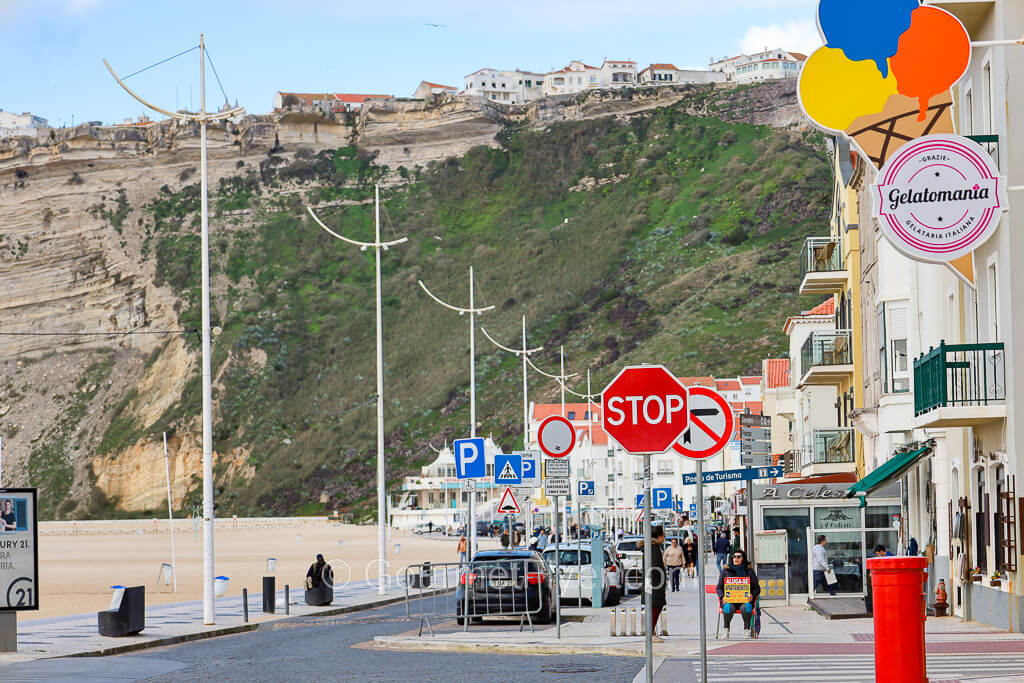

Our guide then took us to the main street along the beach where there were plenty of shops, cafés, and restaurants. You can find plenty of souvenirs, fashions, boutiques, surf apparels, and accessories. If you don’t want to buy anything, it is still a very pleasant walk along the coast.
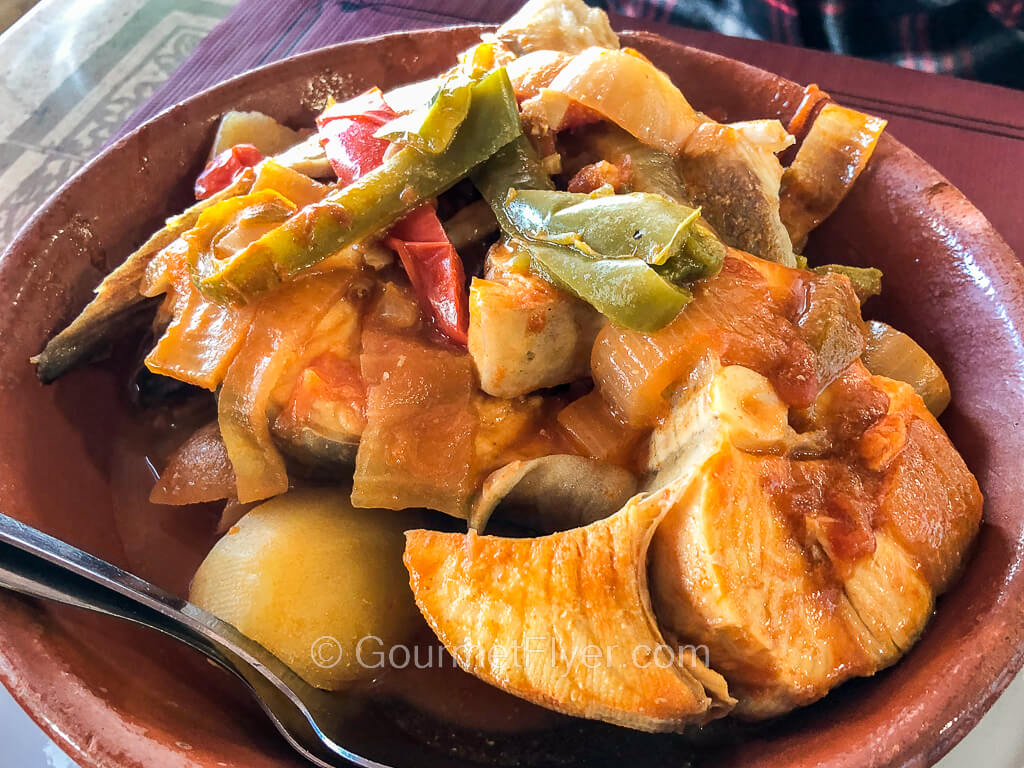
Next item on the agenda was a 90-minute break to have lunch at our own expense. As I’ve said earlier, this is a fishing town, so seafood is the way to go. They are most famous for grilled octopus and fish stew. My wife and I both had a fish stew at one of the restaurants and it was fresh, richly flavorful, and delicious.
Óbidos
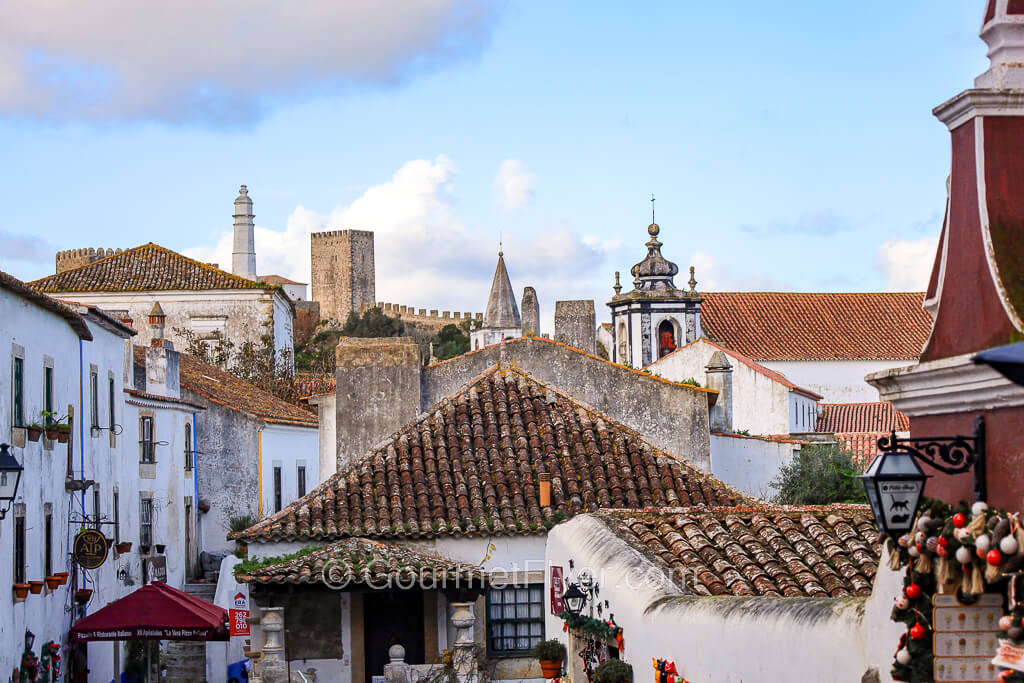
Our final destination of the day was the Medieval town of Óbidos, a hilltop village encircled by a fortified wall built by the Romans.
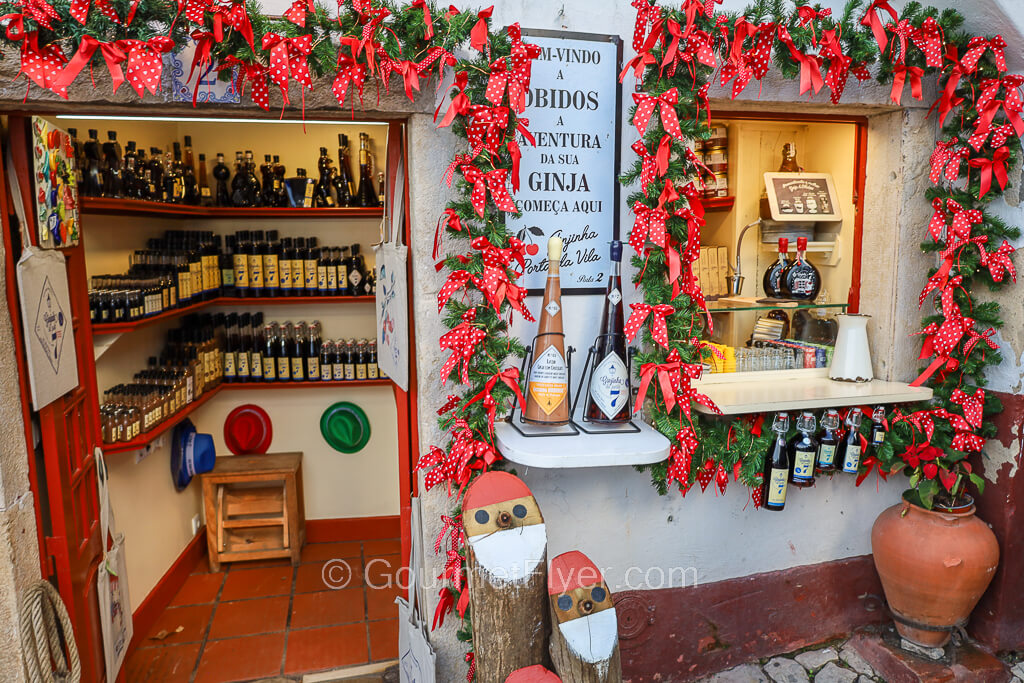
Our first stop was a liquor store selling the iconic Portuguese Ginja – a dark red, sweet liqueur made with cherry, sugar, and a hint of cinnamon. It was more potent than it looked and had a 20% alcohol content.
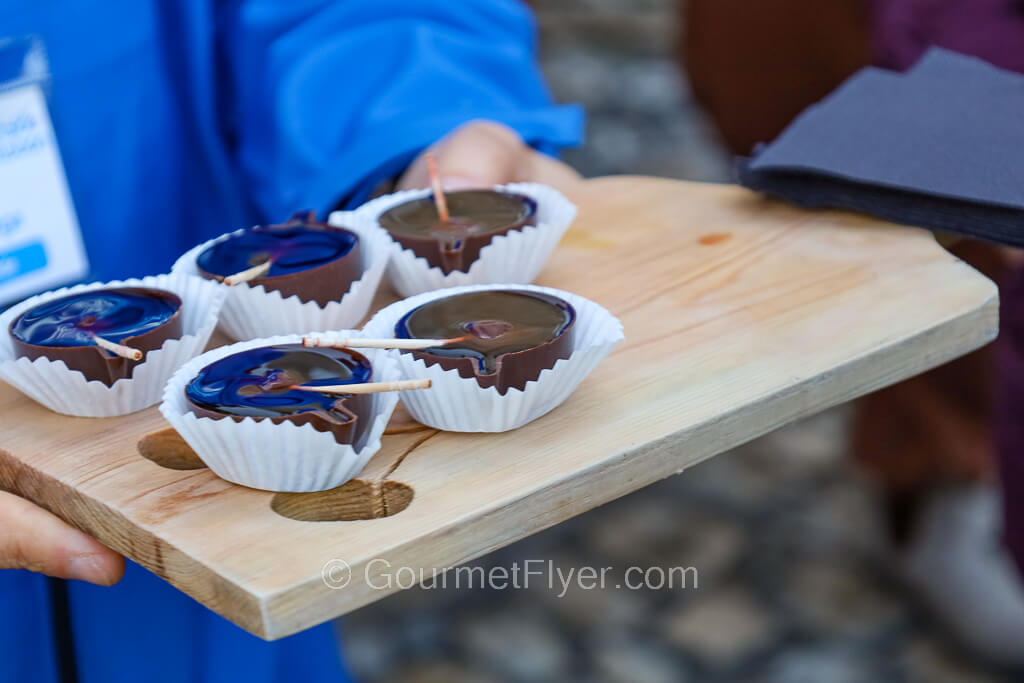
We were all given a free sample of a shot in a small plastic cup with a piece of cherry on a cocktail toothpick. It was sweet and very strong. I recommend not to drink the whole shot at once, but instead take very small sips.
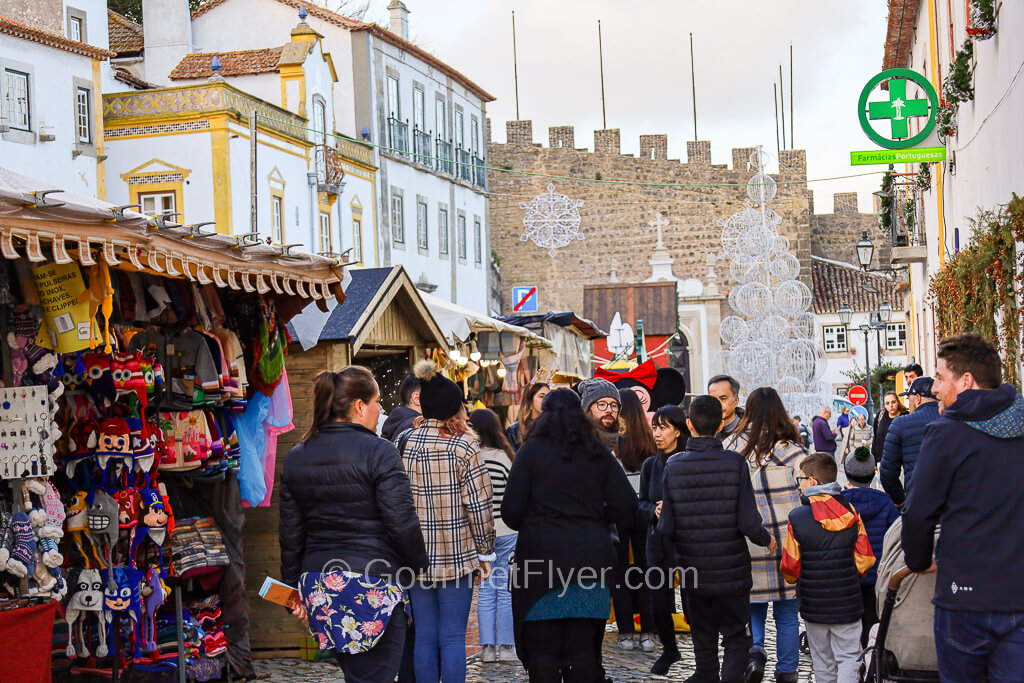
After the free liqueur, we were given 90 minutes to explore the village on our own. We were there in December so there was a vibrant Christmas Market with plenty of festivities going on.
But even during normal times, there are many small and unique shops with different local flavors as well as eateries of all kinds. There are also bookstores as well as stores selling locally made ceramic art and tiles. Roaming around the maze of alleys there is certainly an immersive cultural experience. The small town also holds several events and festivals throughout the year, such as the chocolate festival in spring and the Medieval Fair in summer.
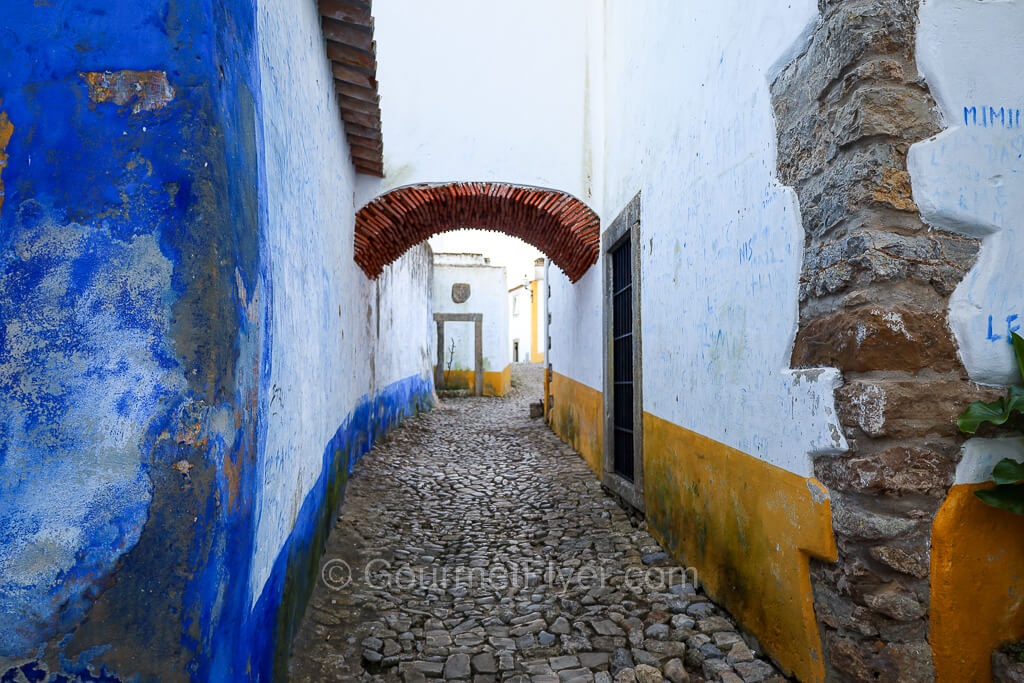

As we ventured along the quaint and narrow alleys, we found the place very well-preserved with almost original Medieval architecture, traditional houses, and cobblestone streets. Just a stroll around town was a breathtaking experience and gave us that lost-in-time feeling.
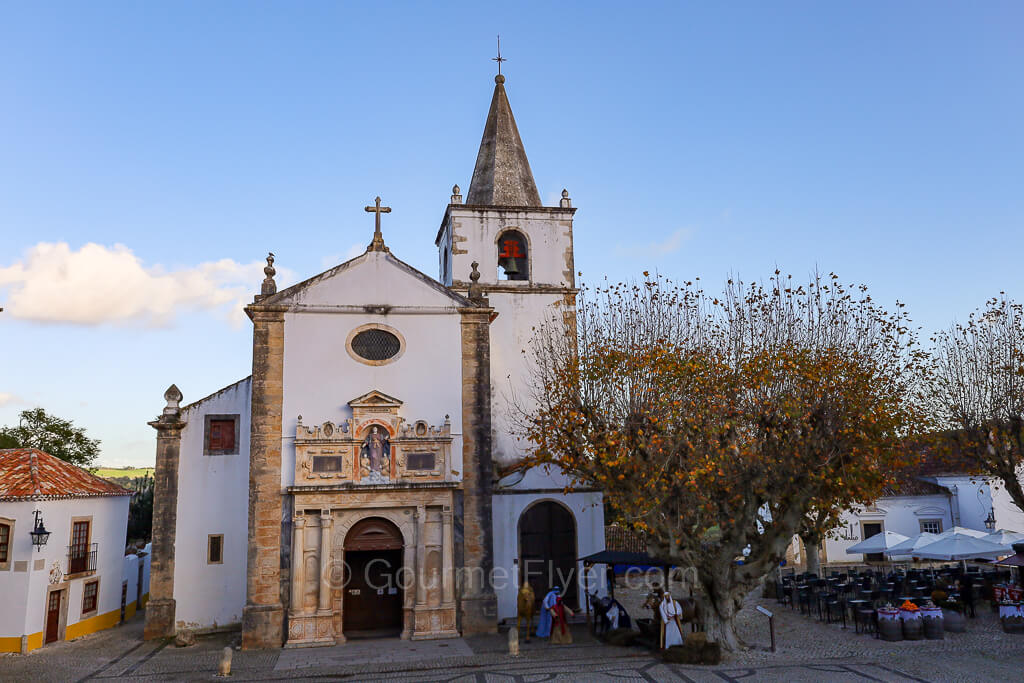
The main Church of the town was Igreja de Santa Maria, the historic site of the wedding between King Afonso and Queen Isabel. Today, this is a very popular wedding venue for the local and surrounding communities. However, most of the structure was damaged by an earthquake in 1531 and the church that exists today was rebuilt in the 1600’s. The current church was built Renaissance style and was elegant but not glamourous.

Óbidos was such a charming village that we truly left our hearts there. Time flies when you are having fun. It flew even faster when we found ourselves lost in a timeless and enchanting paradise. Before we knew it, it was time to meet our guide back at his minivan for the one-hour drive back to Lisbon.
Conclusion
Overall, my review for this day trip from Lisbon to Fátima, Nazaré and Óbidos is highly positive. It was a 10-hour exploration to some of Portugal’s most iconic religious sites as well as a chance to see a quaint fishing village and to savor some fresh and delicious seafood. Last but not the least, the tour concluded with a timeless journey back to the Medieval times. I think the itinerary was very well planned and we did not let even one minute go to waste.
We enjoyed every moment of this excursion and would highly recommend it to anyone who wants to visit these places without the hassle of navigating through a complicated schedule of public transportation or renting a car. Moreover, the commentary by a professional and knowledgeable guide made our visit to each attraction more informed and meaningful. The small group size of eight people was perfect – it was much cheaper than a private tour, but the group was small enough that we still got personalized attention from the guide.
